#kenaifjordsnationalpark
Explore tagged Tumblr posts
Text
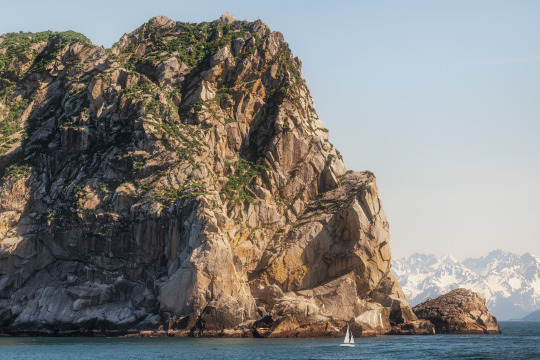
Kenai Fjords, Alaska.
505 notes
·
View notes
Video
youtube
Alaska Wildlife- a reality for most visitors, "as-is" captured video
In the first half of July 2024, we visited Alaska. During our trip, we explored many places in Alaska and encountered various wildlife. We were able to record some of these wildlife in their natural habitats. Remember, Alaska is vast and preserved in its natural state. Although there are many wildlife species in Alaska, spotting them can sometimes be challenging, and they may appear when you're not ready with your camera. So, if you are planning to visit Alaska, try to carry binoculars and a good camera. Please keep viewing our other videos on Alaska and other world destinations. Thanks for watching! www.youtube.com/@TravelLearnRepeat
#youtube#alaska#top15inalaskatodo#alaskatrip#glacier#glaciercalving#travelblogger#travellearnrepeat#seward#aialikglacier#kenaifjordsnationalpark#holgateglacier#alaskawildlife
0 notes
Text




📍 Kenai Fjords National Park, Alaska
Read: https://www.travelistia.com/travel-guide/discovering-alaska-a-complete-guide-to-exploring-the-last-frontier/
#kenaifjordsnationalpark#alaska#fjords#glaciers#nationalpark#wanderlust#adventure#landscapephotography#travelgram#getoutside
0 notes
Text
Seward / Kenai Fjords. Spiral Cove Tours
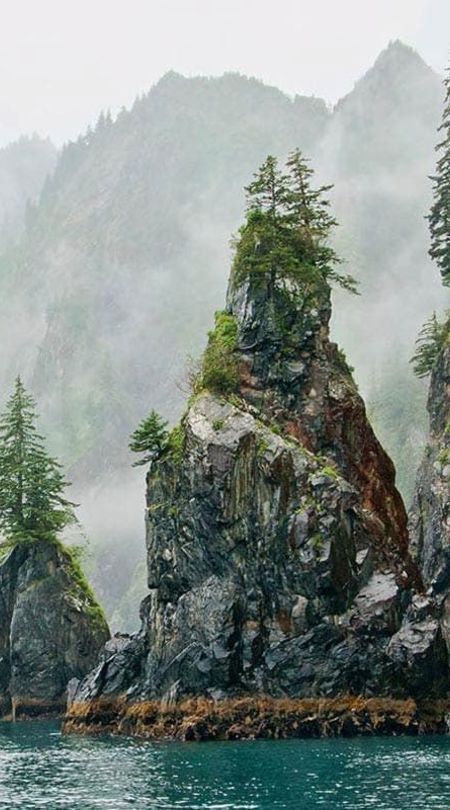
Escape to the breathtaking Seward / Kenai Fjords with Spiral Cove Tours. Immerse yourself in the awe-inspiring landscapes and wildlife encounters that will leave you speechless.
0 notes
Text
Kenai Fjords, Alaska
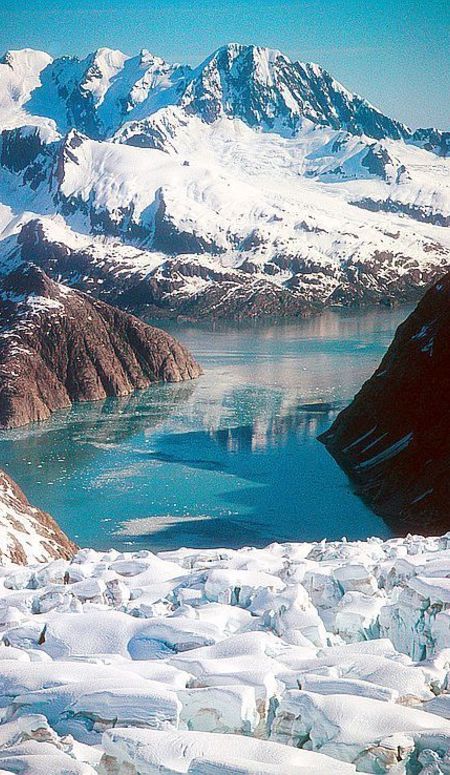
Dare to venture into the magnificent Kenai Fjords and let the rugged beauty of Alaska leave you speechless. Discover your true adventurer spirit.
0 notes
Text
Kenai Fjords National Park Alaska

Explore the breathtaking beauty of Kenai Fjords National Park in majestic Alaska.
0 notes
Photo
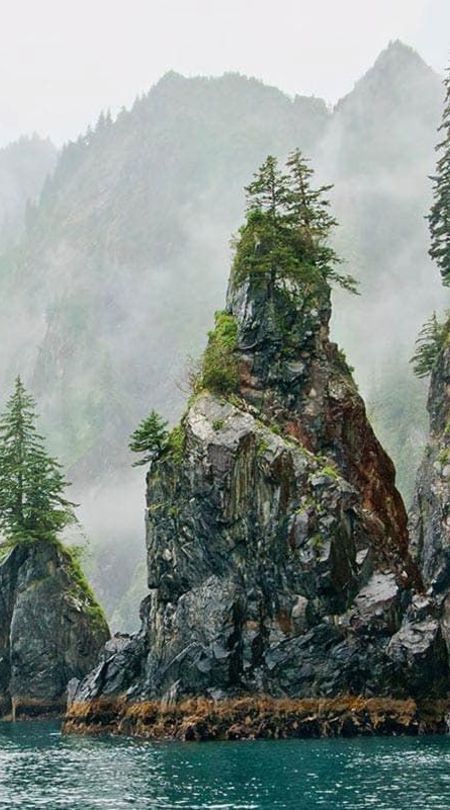
Seward / Kenai Fjords. Spiral Cove Tours Embark on an unforgettable adventure through Seward and the majestic Kenai Fjords with Spiral Cove Tours. Discover the untamed beauty of Alaska like never before.
0 notes
Text
Canoes in Pedersen Lagoon, Kenai Fjords National Park, near Seward, Alaska

Escape to the pristine wilderness of Kenai Fjords National Park and embark on a canoe adventure in Pedersen Lagoon. Immerse yourself in the untouched beauty of Alaska's natural wonders.
0 notes
Photo

Kenai Fjords National Park Alaska Ready for an unforgettable adventure? Let Kenai Fjords National Park take your breath away in stunning Alaska.
0 notes
Link
🚣♂️Kayaking in Seward, Alaska is an unforgettable experience. The town is situated on the Kenai Peninsula, surrounded by the stunning Resurrection Bay and the Chugach Mountains. It's a perfect destination for adventure seekers and nature lovers. 🐋Kayakers can spot humpback whales, orcas, sea otters, and other marine life while paddling. The bay is also home to several glaciers, including the famous Exit Glacier. Kayaking offers a unique perspective to observe the beauty of the glaciers up close. 🏊♀️Seward is a great place for kayaking enthusiasts of all levels. Whether you're a beginner or an experienced paddler, there are plenty of guided tours and rental options available. It's an excellent way to explore the natural beauty of Alaska and create unforgettable memories.1. The Best Kayaking Spots in Seward, AlaskaLooking for ? Look no further! Here are some top picks: Resurrection Bay Kenai Fjords National Park Fox Island Spit Resurrection Bay offers stunning views of glaciers and wildlife. Kenai Fjords National Park has calving glaciers and abundant marine life. Fox Island Spit is a secluded spot with calm waters. Don't forget to bring your camera to capture the breathtaking scenery and wildlife. Keep an eye out for sea otters, seals, and whales. Dress in layers and bring snacks and water. Remember to always follow safety guidelines and check weather conditions before heading out. Consider taking a guided tour for a more immersive experience. 🚣♀️2. Tips for Kayaking in the Cold Waters of Seward, AlaskaBefore setting off, check the weather forecast and dress appropriately. Wear a dry suit or a wetsuit, gloves, and a hat. 👍 Dress in layers 👍 Wear waterproof gear 👍 Protect your extremities Make sure to bring a spare set of clothes in a waterproof bag. Keep your phone and camera in waterproof cases. 👍 Bring extra clothes 👍 Protect your electronics Stay hydrated and bring snacks. Keep a thermos of warm drink handy. 👍 Stay hydrated 👍 Bring snacks 👍 Keep warm drinks available Be aware of the tides and currents. Check with the local authorities for any restrictions or warnings. 👍 Know the tides and currents 👍 Check for restrictions and warnings Stay close to the shore and avoid open waters. Paddle with a partner or a group. 👍 Stay close to the shore 👍 Avoid open waters 👍 Paddle with a partner or a group Bring a whistle or a signaling device in case of emergency. Always wear a life jacket. 👍 Bring a signaling device 👍 Wear a life jacket 3. Safety Precautions to Take When Kayaking in Seward, AlaskaKayaking in Seward, Alaska can be an exhilarating experience, but it's important to take safety precautions to ensure a fun and safe trip. Here are some tips: Always wear a life jacket, even if you're a strong swimmer. Check the weather forecast and avoid kayaking in rough waters or high winds. Bring a waterproof map and a compass or GPS device. Stay hydrated and bring snacks. Wear appropriate clothing and gear, including a wetsuit or drysuit if necessary. Don't kayak alone, always go with a buddy or in a group. Be aware of your surroundings and watch out for other boats or wildlife. Learn basic kayaking techniques and how to rescue yourself or others in case of an emergency. Inform someone of your kayaking plans and expected return time. By following these safety precautions, you can enjoy the stunning scenery and wildlife of Seward, Alaska while staying safe and prepared for any situation. 🚣♀️🌊🐳4. The Wildlife You Can Spot While Kayaking in Seward, AlaskaWhen kayaking in Seward, Alaska, you'll have the opportunity to spot an array of wildlife. Bald Eagles 🦅 - These majestic birds are commonly seen soaring above the water. Sea Otters 🦦 - These playful creatures can be seen floating on their backs or cracking open shells with rocks. Humpback Whales 🐋 - You may catch a glimpse of these massive creatures breaching the surface of the water. Harbor Seals 🌊 - These curious creatures may pop up next to your kayak to say hello. Puffins 🐧 - These adorable birds can be seen diving into the water to catch fish. Remember to keep a safe distance from all wildlife and respect their habitat.5. The Benefits of Joining a Guided Kayaking Tour in Seward, AlaskaJoining a guided kayaking tour in Seward, Alaska is an unforgettable experience. Here are some benefits: Expert guides provide safety and knowledge. Explore hidden coves and wildlife sightings. Learn about local history and culture. Get up close to glaciers and icebergs. Enjoy a unique perspective of Alaska's beauty. Guided tours offer a stress-free experience for all skill levels. Beginners are welcome! Equipment and gear are provided, including dry bags and rain gear. Small group sizes ensure personalized attention and a more intimate experience. Take amazing photos and create memories that will last a lifetime! Book your guided kayaking tour today 🚣♀️🐳🏔️6. Kayaking Gear You Need for Your Trip to Seward, AlaskaBefore embarking on your kayaking trip to Seward, Alaska, make sure you have the right gear to ensure a safe and enjoyable experience. A sturdy, reliable kayak Life jacket (PFD) for safety Paddle with drip rings to keep hands dry Spray skirt to keep water out of the kayak Dry bags to keep personal items dry Waterproof camera to capture stunning scenery 📷 It's important to dress appropriately for the weather conditions in Alaska. Wear layers, a hat, and gloves to stay warm. Wetsuit or drysuit for colder temperatures Waterproof shoes or sandals with good traction Sunglasses with UV protection Sunscreen and insect repellent Whistle and signaling device for emergencies Snacks and water for energy and hydration 🍎💧 Don't forget to check the weather forecast and tides before heading out on your kayaking trip. Always let someone know your plans and expected return time. First aid kit and emergency blanket Navigation tools such as a map and compass Headlamp or flashlight for low-light conditions Bear spray for wildlife encounters Extra batteries and charging devices for electronics 🔋 7. How to Plan Your Kayaking Adventure in Seward, AlaskaBefore you plan your kayaking adventure in Seward, Alaska, consider the following: Choose a reputable guide Check weather conditions Know your skill level Bring appropriate gear When selecting a guide, read reviews and ask for recommendations. A good guide will ensure safety and provide an informative experience. Weather in Alaska can be unpredictable, so check forecasts and plan accordingly. Dress in layers and bring waterproof gear. Know your kayaking skill level and choose a route that matches it. Seward offers options for beginners and experienced kayakers alike. Bring appropriate gear, including a life jacket, paddle, and dry bag. Don't forget snacks, water, and a camera to capture the stunning scenery! Finally, be respectful of the environment and wildlife. Follow Leave No Trace principles and keep a safe distance from animals. 🛶🌊🏔️🐳 In conclusion, kayaking in Seward, Alaska is an unforgettable experience. With its stunning scenery, diverse wildlife, and thrilling adventures, it's no wonder why it's a popular destination for kayakers. 🛶🐳 Whether you're a beginner or an experienced paddler, there are plenty of options for kayaking in Seward. From calm waters to challenging rapids, you can choose the level of adventure that suits you best. 🌊🌲 So, if you're looking for a unique and exciting way to explore Alaska's natural beauty, kayaking in Seward is a must-try activity. Don't miss out on the opportunity to create unforgettable memories and witness the wonders of nature up close. 🏞️🌅 https://xtremesports.net/kayaking-in-seward-alaska/?_unique_id=648e319f97801
#Uncategorised#Alaskanwildlife#Coastalexploration#Kayakingadventure#KenaiFjordsNationalPark#Sewardattractions#aiomatic_0
0 notes
Text

Harding Icefield, Alaska
#glacier#alaska#snow#ice#travel#wanderlust#film#photography#texture#art#adventure#nature#wilderness#hardingicefield#kenaifjordsnationalpark
15 notes
·
View notes
Text
Ahhhhhhh

Kenai Fjords, Alaska.
582 notes
·
View notes
Video
youtube
Aialik Glacier- Kenai Fjords National Park, Alaska- 7.5 hours cruise from Seward, Alaska
This video is about Aialik Glacier in Kenai Fjords National Park. We took a 7.5-hour Major Marine Cruise trip to explore Kenai Fjords National Park, where Aialik Glacier is located. Some Tips on Cruise: Book in Advance: Ensure you book your cruise ahead of time, especially during the peak season. We took Major Marine Tours from Seward, Alaska. Dress in Layers: Even in early July, it was very cold, windy, and rainy. We packed raincoats and wore weather-appropriate shoes; we opted for waterproof hiking shoes, which helped a lot when going on the deck in the rain without getting wet and uncomfortable. For the best viewing experience and photography, we brought a good pair of binoculars and a quality camera. Remember, wild animals do not always come close to the cruise, so you need to stay attentive and ready with your binoculars and/or camera to see and capture the experience. Food and Amenities: The cruise line provided a complimentary deli lunch with sandwich options: turkey, roast beef, or vegetarian. You were also welcome to bring your own lunch and snacks. However, packing light and being mindful not to litter was important. The cruise line provided free coffee, tea, and hot chocolate. The cruise also had a small snack bar and a restroom. About Aialik Glacier: Aialik Glacier is a tidewater glacier, meaning it flows directly into the ocean. The glacier is currently retreating. Aialik Glacier's face stretches approximately a mile wide and towers up to 300 feet above the waterline. Its size and the sheer volume of ice it holds make it an impressive sight. Situated in the northeastern part of Kenai Fjords National Park, Aialik Glacier is part of the Harding Icefield, one of the largest ice fields in the United States, covering approximately 700 square miles. The glacier, like other tidewater glacier in the region, was formed from the accumulation and compaction of snow over thousands of years. It flows down from the Harding Icefield, through Aialik Bay, and into the Pacific Ocean. Please keep viewing our other videos on Alaska and other world destinations.
Thanks for watching!
www.youtube.com/@TravelLearnRepeat
#youtube#alaska#Top15inAlaskaTodo#alaskatrip#glacier#glaciercalving#travelblogger#travellearnrepeat#seward#aialikglacier#KenaiFjordsNationalPark
0 notes
Photo

Kenai Fjords, Alaska,
Sekar B Photography
#art#photography#fjord#alaska#glacier#island#kenaifjordsnationalpark#kenai peninsula#naure#earth#backtoearth
206 notes
·
View notes
Photo

Listen @kenaifjordsnps, can't you corral these 30 ton creatures so I can gawk at them all day? It's not like there's anything else interesting to see here.
#usnationalparks#kenaifjords#alaska#kenaifjordsnationalpark#visitalaska#thelastfrontier#nationalparks#subparparks#weareparks#findyourparks
11 notes
·
View notes
Photo

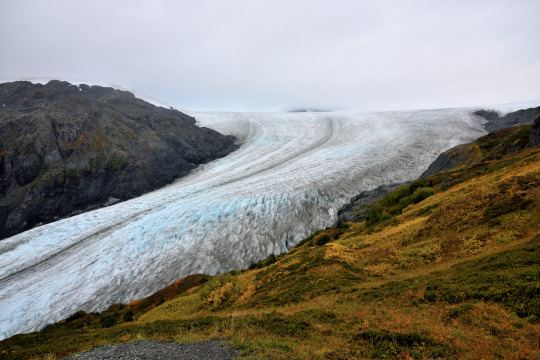


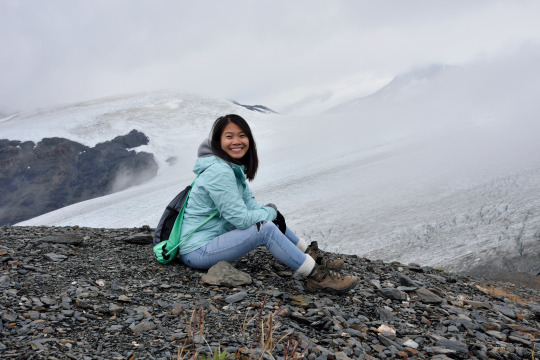


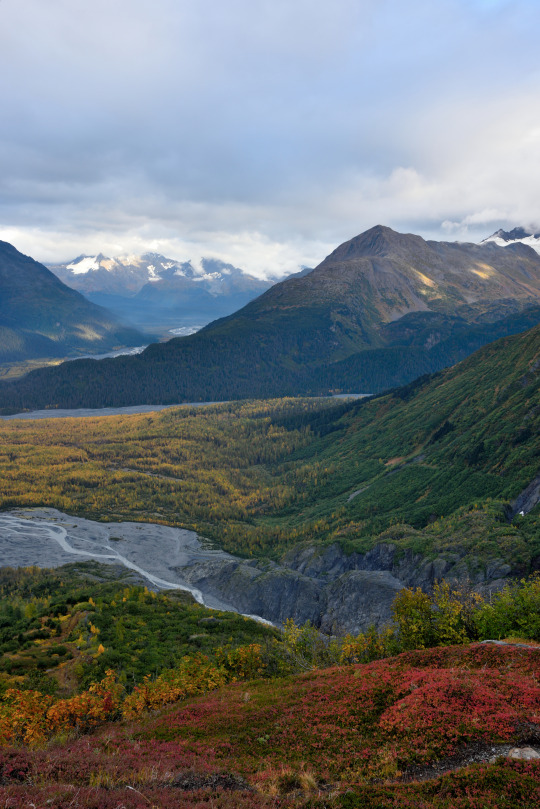

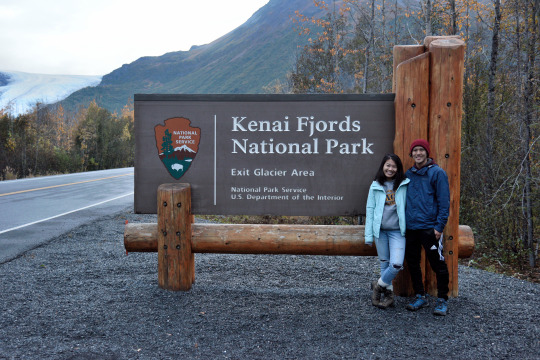
September 21st, 2020
Day 8: The Day We Spent 9 Hours Hiking To and From The Mother Of All Glaciers
After Cynthia finished her interview this morning, we quickly drove into town to grab to-go breakfast from a restaurant we had found on Yelp before driving to the trailhead for our hike to the Harding Icefield. Unfortunately, once we arrived, we realized that they were already closed up for the season. Instead, we had to drop by Safeway to grab some food. I grabbed two donuts and milk from the bakery and Cynthia went with her Starbucks ham and cheese croissant sandwich to make things quick and easy.
We finished our breakfast while making our way out to Kenai Fjords National Park, which was a short drive away. While driving down the road to get to the park’s parking lot, I saw a park ranger car parked on the side of the road as I drove into the park. And when I saw him start moving when I passed him, I knew I was not going the right speed. Because I didn’t notice how fast I was driving and that the speed limit had dropped significantly out of nowhere, I was pulled over. Ugh, how I hate police lights turning on right behind me. So I stopped and was questioned about the situation. I was truthful about the situation with the ranger (always the right decision) and because of that, I was let go with a light warning, thank goodness. I’ll definitely be monitoring the speed limit a little closer in these towns and national parks now.
By the time we arrived at the trailhead, it was around 11am or so. What we had in store for today was the Harding Icefield Trail hike, a well-trekked and difficult hike of 8 to 10 miles roundtrip that climbed over 3800ft in elevation within a segment of 4 miles or so. It was a pretty steep hike that led to the Harding Icefield, a large field of ice that gave rise to many glaciers in the area. Our start was a bit later than I wanted but there was still plenty of time to get to the top and back down. The weather wasn’t great at the start. It was a bit drizzly and very cloudy. But those conditions were better than it being too hot as we’d have to carry our layers instead of wearing them, which is probably way more annoying.
At first, the hike took us along a dirt path to the actual trailhead before starting upwards through the wet trees. There, in the mugginess, we ran into a ton of flies or midges that were super annoying to deal with while hiking. Because it was low season, and maybe because of the weather, the trail was very quiet. There weren’t that many cars in the parking lot when we arrived this morning, and there weren’t many people that we ran into while hiking initially as everyone was far ahead of us. It’s always nice when it’s quiet while hiking. Anyhow, we slowly hiked our way up, step by step, incline after incline. During some parts, the hike kind of reminded me of an easier version of the Day 2 ascent I had to do on the Inca Trail, where I had to ascend 1000m step by step over a few hours because there were only steps and no good stopping point to rest. Good thing this hike wasn’t even close to that in difficulty or both me and Cynthia wouldn’t have made it.
As we climbed, the rain continued to come down steadily, to the point that we needed to keep our rain jackets on or we’d get soaked little by little. We took a lot of breaks throughout the hike, mostly because Cynthia wasn’t used to such strenuous hikes and this was probably the most difficult hike she’s ever done. So we took our time and made sure she was comfortable moving forward before continuing on. And she did fine with those breaks.
Once we reached the Marmot Meadows, we were about 1.5 miles into the hike. At that point, our surroundings became more open with less trees and the trail became more of a steady climb upwards toward the cliffs and ridges. This segment of the hike was just beautiful because of the fabulous open views that it provided us as we hiked up. From the trail, we could see the mountains and valleys behind us, the fall colors below us, the Exit Glacier and the beginnings of the Harding Icefield right across the way, as well as the rays of sunlight beaming through the little breaks in the clouds in the distance. It was just beautiful! So beautiful that we spent a ton of time there taking photo after photo. It was so hard to resist taking out my camera every few feet to capture a new scene.
As we slowly made our way up, the temperature around us dropped to (probably) the high 30s, low 40s as the Harding Icefield became more and more visible in front of us. Good thing that at this point, the wind hadn’t picked up too much or we’d be freezing. It was around this point that people behind us started to pass us and people in front of us started to descend past us. No worries, we weren’t in a huge race to get to the top for any reason whatsoever. The nice thing, though, about having folks descend past us is that we could ask them about the route ahead, if there were any animal sightings, how long until we got to the end of the trail, etc. One group that was descending told us that they had spotted a small black bear in the distance earlier this morning on their ascent but that it was gone by the time they started making their way down. They saw a black bear! We were excited about the possibility of spotting a bear from afar as well but ended up striking out and not seeing any bear the entire hike. Sadness
But luckily, we did have more gorgeous views as we made our way up. By this point, the glacier seemed like a stone’s throw away.. Actually, it was probably a little further away than that. We slowly climbed and photographed and rested, and before we knew it, we had reached the next section of the hike: the area that people call “Mars” or the martian-like rocky landscape right before the end of the trail. Because we were near the top of a mountain, this area was particularly rocky with very nondescript trails leading through the black, rocky landscape. Fortunately, we had received some advice from other hikers regarding how we should be careful with the trails, how far we should hike, and how long it would take. And after what seemed like way longer than we expected, we eventually spotted the emergency shelter at the very top of a hill that marked a soft endpoint to the hike and slowly climbed our way up and down until we reached it. When we finally reached the shelter, we peered inside and found that many previous visitors to the shelter had written or engraved their names into the wooden walls of the cabin or the cabin door frame. So, we too left a memento of our visit before trekking further out toward the Harding Icefield.
It took a little while to figure out which unmarked path would take us to the edge of the rocky area and closer to the expansive Harding Icefield but eventually, we found one of the right paths and walked down toward the glacier. We hiked to the end of the path to a viewpoint of the glacier but didn’t see anything marking it as the end of the trail. There, we enjoyed the views of the ice field and took photos and videos before finding a nice, comfortable spot on the ground to enjoy our packed lunch, which included the rest of my sourdough sandwich from the other day for me and another Starbucks ham and cheese croissant for Cynthia with some chips and clementines to enjoy as well. And man was the food yummy after a long hike up to the ice field.
As we sat there and ate lunch, we also took a moment to enjoy the views of the ice field as the heavy clouds blew in and out, covering the glacier from time to time while also letting sunlight slip through from time to time. It wasn’t long (probably 30 minutes or so) before the wind picked up and Cynthia became very cold. So we ate our food quickly and started our descent.
Despite the hike being an in-and-out trail, the views that we enjoyed on the way down seemed drastically different from the views that we enjoyed on the way up. That’s probably because we were primarily facing different directions on the way up and on the way down, thus giving us different scenes to view each way. Having such a beautiful panoramic view to enjoy on the way down made the descent much more enjoyable (besides the fact that we were now effortlessly descending and not ascending). It also made for a lot of photo stops of course, which made the descent take much longer than we thought it’d take. With those photo stops essentially being the only stops we had, we slowly made our way down the mountainside. By this time in the afternoon, the clouds were starting to thin out and clear up, allowing us to watch as the sun started to set in the sky. And as the clouds cleared up, so did the rain, leaving a gorgeous scene that photos likely won’t do justice for.
After all that stopping, we finally started to pick up the pace as we made it back to treeline level and eventually made it all the way down. After timing the hike (which totaled about 9h15m), it took us roughly 5 hours to make it to the top and about 3.5 hours to make our way down from the top with all of the stops both ways. What an amazing hike with amazing views, amazing scenery, an amazing endpoint, and really nice fellow hikers that we interacted with! And great, dramatic weather! We definitely lucked out today!
As we drove out of the park, we made a stop at the Kenai Fjord National Park entrance sign for a quick photo before driving back home to our cabin as the darkness set in. The rest of the night was very restful, which was much needed after the long day out. Instead of driving out and finding a restaurant for dinner, we just ate the rest of our leftovers from yesterday which were surprisingly good one day later despite it all being fried foods that got somewhat mushy in the fridge. After dinner, we each enjoyed a nice cup of hot chocolate in our cabin (originally we were planning to sit on the deck outside but because it was so damp and buggy outside, we decided to drink our hot chocolate inside instead) while finishing what we had left of The Avengers: Infinity War. Once that was over, it was time to clean up and get ready for bed. Whew, what a day!
5 Things I Learned/Observed Today:
1. For entry into a lot of national parks, you usually have to pay a fee. Luckily, with Kenai Fjords National Park, you don’t. It’s always great to save money.
2. Harding Icefield is very large and its surrounding areas are very cold. And the icefield is more than 700 square miles in area! That’s just ridiculous!
3. Despite what Alaskans say, bears and moose are not very easy to spot on a two week trip to Alaska. You have to be in the right spot at the right time or super lucky.
4. In Seward and the surrounding areas, beware of speed traps and police and park rangers just chilling in their cars on the side of the road waiting for speedsters like you and me. Sometimes the speed limits change very quickly and all of a sudden and you don’t notice until it’s too late. Always be wary of the speed limit because they can definitely catch you speeding because that’s probably what you normally do on country rounds in rural areas.
5. Grizzly bears have large shoulder humps and are much more dangerous than black bears. Those are two characteristics that separate the two. Also, based on the signs about bear precautions, if a black bear attacks you, fight back. If a brown bear (i.e. grizzly bear) attacks you, the first thing you should do is play dead and not fight back. That alone tells you a lot about the difference between black and brown bears.
#huyphan8990#withabackpackandcamera#travelblog#travel#blog#Seward#Alaska#KenaiFjordsNationalPark#Harding Icefield#hiking#hike#nature#landscapephotography#fallcolors#travelphotography#glacier#September#2020#autumn#worldtravels
1 note
·
View note